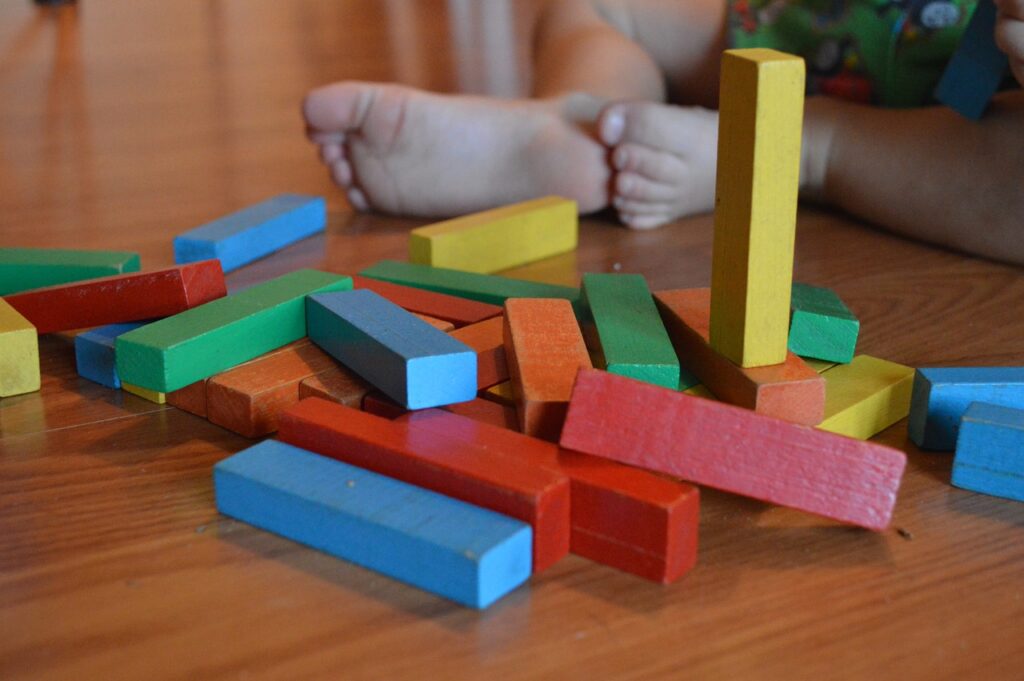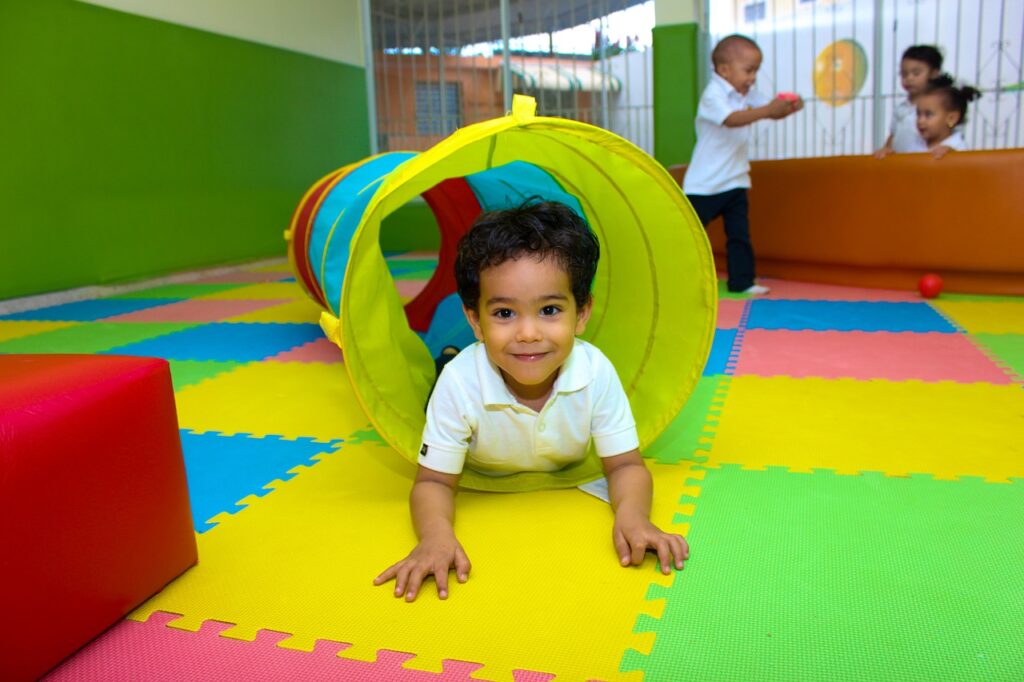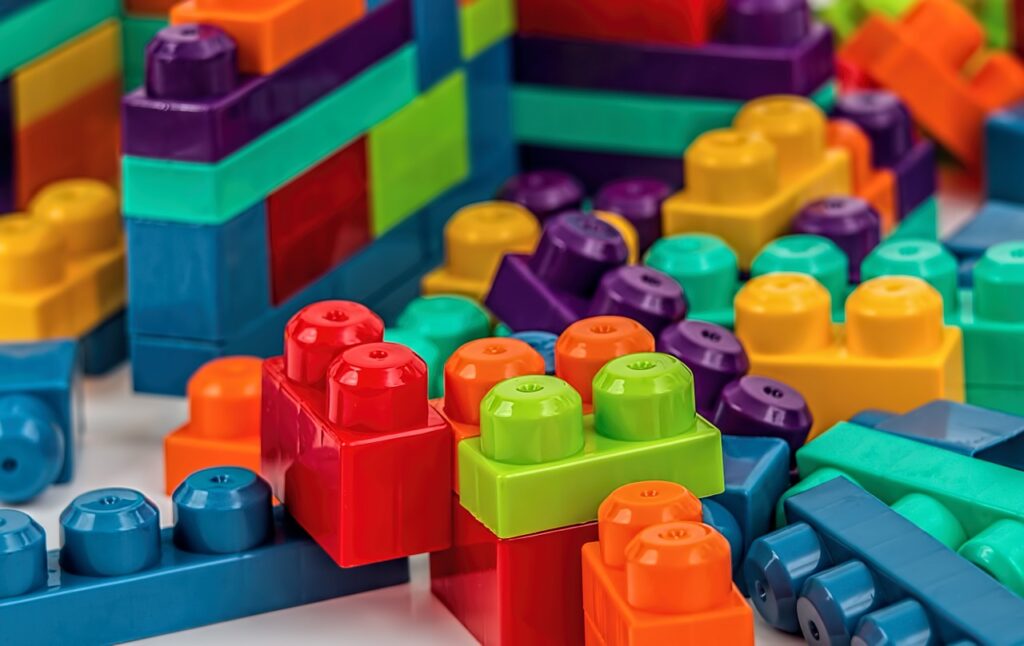For parents navigating the enrolment process for three and four-year-old future kindergarteners, the myriad of labels surrounding kinder, pre-school and early learning centres (ELCs) can be confusing at best and overwhelming at worst!
Ask anyone who works in the early childhood sector, and you’ll soon find out it’s common for friends, family (and sometimes complete strangers) to ask them how they find high-quality service for their children.
Understandably, young families can be a little anxious about making the right decision on where to send their little ones.
The available information stresses the importance of those first few vital years in a child’s life and the impact that great experiences can have on their future. In this article, you’ll find some simple things to look for as you navigate, finding that special early learning centre that will be able to provide the high quality early learning and care for your child that you want.
While a lot makes up a high-quality early learning service, there are a few important aspects that are worth understanding a bit more about. These elements work in an integrated way to support children’s learning and care.
What is Early Learning?
“In my view, education begins at birth. A child’s parents and their family, together with their wider community, serve as the infant’s formative ‘teachers’. With that in mind, I describe Early Learning as the stage at which children are first introduced to education providers beyond those that exist within their own families.
In a well-resourced Early Learning Centre, the education model shifts from caregivers to trained professionals researching and studying the cognitive and developmental milestones faced by three- and four-year-old Kindergarten children.
Early learning and childcare (ELC) is a generic term used to cover the full range of early education and childcare available in Scotland today. The term early learning and childcare is intended to emphasise that the care and education of very young children are not two separate things. Babies, toddlers and young children learn all the time from their experiences.
ELC settings are all those which offer education and childcare to children up to school age. These include family centres, nursery schools, nursery classes attached to primary schools, and childminders. ELC settings can be operated by local authorities, private businesses, voluntary sector organisations, and in the case of childminders, self-employed individuals.
Within This Setting, Children Engage In Dynamic Indoor And Outdoor Play.
Early childhood education is a broad term used to describe any educational program that serves children in their pre-school years before they are old enough to enter kindergarten. Early childhood education may consist of activities and experiences designed to aid in the cognitive and social development of preschoolers before they enter elementary school.

How and where early childhood education is provided can differ from one state to the next – or even from one school to the next within the same state. Pre-school education programs may be designed specifically for either three-, four-, or five-year-olds.
They may be provided in childcare and daycare or nursery school settings and more conventional pre-school or pre-kindergarten classrooms. These programs may be housed in centre-based, home-based, or public school settings, and they may be offered part-day, full-day or even on a year-round schedule to include summers.
Early childhood education programs also differ in terms of funding and sponsorship, and can be privately run, operated by a local school system, or operated through a federally funded program like Head Start.
How Does Early Learning Differ From Kindergarten And Pre-school?
“Traditionally, ‘pre-school’ or ‘kindergarten’ was purely intended to help socialise children outside of their homes. However, over time, as research revealed the positive long-term impacts of exposure to an early learning environment, pre-schools moved towards a model that supports social, emotional and cognitive development.
It is important to note that an early learning service can define itself using any of the words ‘early learning’, ‘kindergarten’ and ‘pre school’. Consequently, these terms have become virtually interchangeable.
Understanding Early Learning Centres
Combining the long hours of childcare centres with the enriched learning environments of pre-schools and kindergartens, early learning centres are excellent combined care and educational option for many modern families.
With longer opening hours, the ability to accept children from birth through to five years old, with qualified early childhood specialists (including university-qualified early childhood teachers), early learning centres offer the best of both worlds.
According to Liz Schembri, Head of Early Learning at Alive Mount Barker, the key benefit of early learning environments is that they incorporate the latest research in child development to create learning opportunities in everyday activities.
“Because of this, it’s important to ensure we’re building connections to knowledge and skills as part of the inquiry in those early years to really set our children up for life,” she said.
Another benefit of many early learning centres, like Alive, is that they are also co-located with a partner school, which can help transition from early learning to primary learning in one familiar environment.
“Because our Alive Catholic Early Learning Centre in Mount Barker is co-located with St Francis de Sales College, children and families will feel immediately welcome as part of the warm and intimate college community, which provides continuity and support through their transition from early learning to school,” Gemma said.
Each Alive Catholic Early Learning Centre is led by a Head of Early Learning who is a qualified teacher and has school leadership experience.
“Owing to our experience in schools, we have a good understanding of the support children need to feel comfortable and excited about their transition into primary school,” Gemma said.
“Because we understand children’s development, our dedicated staff design learning programs for each child from six months through to five years of age.”
Type of Early Learning Centre in Australia
Home-based care
Home-based care is when a friend, relative, babysitter or nanny cares for your child in your own home.
You might choose to organise home-based child care because other child care options aren’t available when you need them, or they don’t meet your needs.
Many families use informal home-based care – for example, grandparents or other relatives look after children, either regularly or occasionally.
Other families make more formal arrangements – for example, they use babysitters or nannies.
Babysitters are handy for occasional care – for example when you’re going out for an appointment or social event. However, for longer and more regular hours of care, you might choose to employ a nanny. Nannies are generally more experienced and better qualified than babysitters.
Centre-based Day Care: Long Day Care And Occasional Care
Centre-based care includes long day care, occasional care, pre-schools and kindergartens.
Long daycare at a child care centre suits many families who work regular weekdays.
Some child care centres offer occasional care for families who need someone to look after their children every now and then. This is a good option for parents who work irregular or unpredictable hours.
Pre-schools or kindergartens operating from stand-alone centres offer education and care programs for children aged three or four years.
Centre-based care has some advantages and benefits. It:
- is reliable
- offers structure and routine
- offers lots of opportunities for children to play and socialise with many other children.
Family Day Care
Family daycare is when your child is looked after by an approved carer in the carer’s home.
Family daycare has some advantages and benefits. It:
- is a home-based environment, which many families like
- offers lots of opportunities for children to play and socialise with other children
- can be flexible – for example, if you need care for part of the day.
Family daycare might be less reliable than centre-based care – for example, you might have to find backup care if your carer gets sick.
Outside School Hours Care
Outside school hours, care is centre-based child care for families who need care before and after school, on student-free days and during the school holidays. It’s only for primary school-age children.
Choosing The Right Type Of Care For Your Child

When it comes to selecting the best arrangement for your family – regardless of your decision – Gemma believes there are various factors that families should consider.
“Children respond well to consistency and routine, so it’s helpful to make sure that children are going to see the same educators each day.”
“It’s also important that the curriculum is personalised to meet the changing needs of each child, and that the centre’s approach to learning is holistic – encompassing the cognitive, physical, social, emotional, and in our case, spiritual development, of your child.”
“At Alive, our curriculum covers social and emotional learning, movement, STEM, numeracy, literacy, arts and expression and spirituality. With our relevant and dynamic curriculum, children enjoy a range of experiences and opportunities”.
“We provide young children with a quality education, which includes our commitment to proactive and effective relationships with both parents and their children.”
Liz Schembri from Alive (Mount Barker) said that at an early learning centre like Alive, everything it does is centred around supporting a child’s development in this incredibly formative period of their life and shaping how they see themselves as learners – now and into the future.
“At Alive, we focus on a child’s social and emotional wellbeing as well as their brain development. Early learning is about understanding these major developmental milestones and tapping into those experiences and teachable moments in everyday life that will enable children to learn,” she said.
The Elements Of An Early Childhood Education Program
Over the years, there has been much debate about what type of program qualifies as simply care and what type of program qualifies as education. Another concern of today’s early childhood education programs is ensuring that they are of high quality.
The Early Education for All Campaign (www.strategiesforchildren.org), a coalition of leaders who work to ensure that children in Massachusetts have access to high-quality early education, recognises early childhood education as “…warm, nurturing care and enriched learning experiences designed to simulate a child’s development in all key developmental areas.”
The National Education Association recognises that a high-quality early childhood program includes five critical components:
- Provides a well-rounded curriculum that supports all areas of development
- Addresses child health, nutrition, and family needs as part of a comprehensive service network
- Assesses children to enhance student learning and identify concerns
- Employs well-educated, adequately paid teachers
- Provides small class sizes and low teacher-child ratios
The U.S. Department of Education recognises that the effectiveness of an early childhood program is dependent upon several factors:
- A quality staff
- An appropriate environment
- Consistent scheduling
- Parental involvement
- Proper grouping practices
This federal agency also recognises additional characteristics of a high-quality early education program:
- A balance between individual, small group, and large group activities
- A balanced schedule that does not result in rushed or fatigued children
- A clear statement of goals and a comprehensive philosophy that addresses all areas of child development
- A strong foundation in language development, early literacy, and early math
- Access to a safe, nurturing, and stimulating environment, along with the supervision and guidance of competent, caring adults
- Engages children in purposeful learning activities and play, which is instructed by teachers who work from the lesson and activity plans
- Nutritious meals and snacks
- Teachers and staff who regularly communicate with parents and caregivers
- Teachers who frequently check children’s progress
The Early Education for All Campaign outlines the quality characteristics of high-quality early childhood education curriculum and activities:
- Balanced: The curriculum should provide a balance of play and structured activities, including the teacher- and child-initiated exploration.
- Based on a child’s developmental needs: Activities, materials, and schedules should be appropriate to a child’s age and support all developmental domains.
- Well-planned: The curriculum should reflect current research on child development and should include specific learning goals for children.
Early Learning Centre Teachers and their Role in a High-Quality Early Learning Program
According to the Early Childhood-Head Start Task Force (a joint effort between the U.S. Department of Education and the U.S. Department of Health and Human Services), pre-school teachers teach and nurture our youngest children. In addition, these early childhood educators help these young learners become successful learners, readers, and writers.
As such, pre-school teachers play an important role in the lives of preschoolers, some of whom may lack adequate experiences at home. These professionals help children:
- Become familiar with books and other printed materials
- Develop language abilities
- Increase their knowledge
- Learn letters and sounds
- Learn to count
- Recognise numbers
Preschool teachers may use several strategies for teaching the above skills while nurturing their students’ natural curiosity and their zest for learning. Preschool teachers can accomplish their teaching goals by:

- Building children’s background knowledge and thinking skills
- Checking children’s progress
- Communicating with parents and caregivers
- Creating a learning environment for young children
- Helping children develop listening and speaking skills
- Reading aloud to children
- Teaching children about books
- Teaching children about letters
- Teaching children about numbers and counting
- Teaching children about print
- Teaching children about the sounds of spoken language
Which Type Of Child Care Is Right For You?
When you’re trying to decide what type of child care is right for your family, you might want to consider the following questions:
As exciting as it is to get ready for pre-school or kindergarten, it may also be an overwhelming time for you and your child. It is better to prepare for this ahead of time to make things easier: the earlier you start preparing, the better.
- How long? Think about how many hours or on what days you will need childcare services.
- What? Know each type of available care service, and decide which suits you best. It should be in tune with your lifestyle but at the same time a good fit for your child: daycare, long daycare centres, pre-schools, outside school hours care etc.
- Is there a waiting list? Most care services have a waiting list, therefore choose several daycare solutions and enlist in more than one. Thus, your chances of finding a service you are happy with are better.
- Visit. Have you found a service that works for you? Don’t make a final decision until you visit the place: ask questions about the service, request details. A perfect service for others might not be good for your family, so look around and put your options in balance.
Registering early for child care
When you’ve decided, or even while still deciding, it’s a good idea to register with any services you’re interested in. It’s OK to put your child on more than one waiting list because you might not get all the days you need from one service alone.
- Determine the type of childcare service you are looking for. ...
- Type of Education and Philosophy. ...
- Location of the childcare centre. ...
- Availability & Waiting List. ...
- Childcare Costs. ...
- Flexibility. ...
- Licencing and Registration.
When choosing a childcare centre, you as the parent have the right to expect it will provide a safe, supportive place for your child's self-identity and awareness to grow. It's important that educators in your choice of centre value each child's individual interests and opinions and treat them with respect and love.
A high-quality childcare center has a friendly and warm environment conducive to learning. Be sure to pick a daycare with clean and sanitary buildings and classrooms. Check their toys and learning materials to make sure they are safe and child-friendly.

